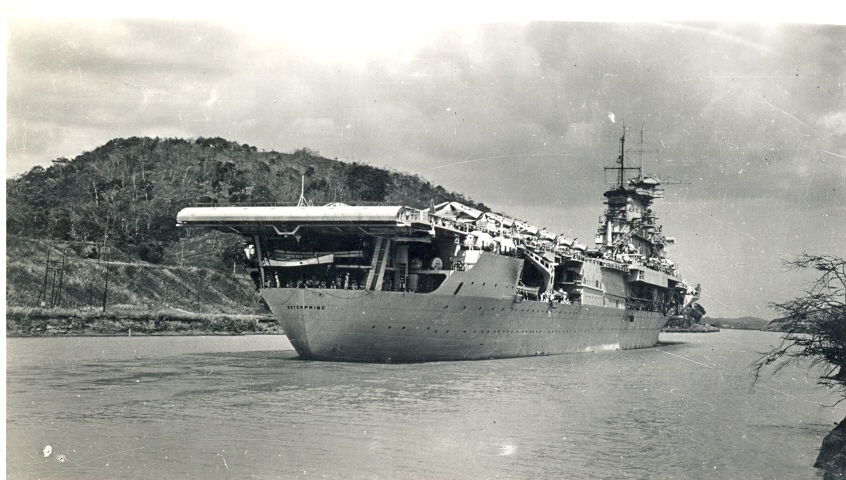Posted on 01/11/2006 10:16:24 PM PST by Royal Wulff
enterprise
the current enterprise is too big, or is there a carrier class called enterprise different from cvn-65?
Noooooo! Not Kimmy!
Goodbye Jung we gotta go me-o-my-o.
I like your thinking.

CV-6 in 1945?
I just wonder if this is true or if its a wives tale. The reason is that there is a similar tale about a woman cutting off half a roast before putting it in the oven. When asked about it, she said it was because her mom did it that way. Then her mom's mom did it that way. Then, later, we find out that the first person who did it that was was because the pan used couldn't hold the entire roast.
Similarly, the German Tiger tanks of WW2 had 2 sets of tracks, a normal "wide" set for field use, and a narrow set for transport by rail. The narrow tracks allowed the tanks to fit on railroad flatcars and pass through bridges and tunnels. What a hassle.
That must have sucked! I hate breaking track.
Do you have a transcript of "There are only 3 kinds of people"?, I laughed so hard at the end of this movie!
They also had to remove the outer row of road wheels!
"How MIL Specs Live Forever"
http://www.snopes.com/history/american/gauge.htm
Origins: This is one of those items that -- although wrong in many of its details — isn't exactly false in an overall sense and is perhaps more fairly labelled as "True, but for trivial and unremarkable reasons." Marvelling that the width of modern roadways is similar to the width of ancient roadways is sort of like getting excited over a notion such as "modern clothes sizes are based upon standards developed by medieval tailors." Well, duh. Despite obvious differences in style, clothing in the Middle Ages served the same purpose as clothing today (i.e., to cover, protect, and ornament the human body), and modern human beings are very close in size to medieval human beings (we are, on average, a little bit taller and heavier than we were several centuries ago, but not much), so we naturally expect ancient and modern clothing to be similar in size.
So, rather than going into excruciating detail about the history of transportation, we'll simply note that roads are built (or worn) to accommodate whatever uses them, and that for many centuries prior to the advent of railroads, what travelled on roads were mostly wheeled conveyances, pulled by beasts of burden (primarily horses), carrying passengers and goods. Physical conditions dictated some of the dimensions of those conveyances (such as the width of their axles) and largely ensured that they would fall within a fairly narrow range of variation: Horse-drawn vehicles, whether they were chariots or carts or carriages, all served similar functions, so practical considerations (e.g., the speed at which horses could travel, the amount of weight horses could pull, the number and arrangement of horses that could be controlled by a single driver) required that they be relatively similar in size as well.
That may suffice as an explanation covering the specific combination of horse-drawn vehicles and roads, but what about vehicles that travelled on rails instead of roads (such as trolleys), or that weren't pulled by horses (such as trains)? Why should they be similar in size to their predecessors?
etc
ya got me....I dunno.
LOL! That's Baw'mer Harbor!
Oh, Misah RandarrFragg!!....You MUCH humah !!!!
Wouldn't surprise me a bit.
PLEEEEZE let him be dead!
Thanks for the link...nice.
You know this is just an urban legend, don't you?
Disclaimer: Opinions posted on Free Republic are those of the individual posters and do not necessarily represent the opinion of Free Republic or its management. All materials posted herein are protected by copyright law and the exemption for fair use of copyrighted works.